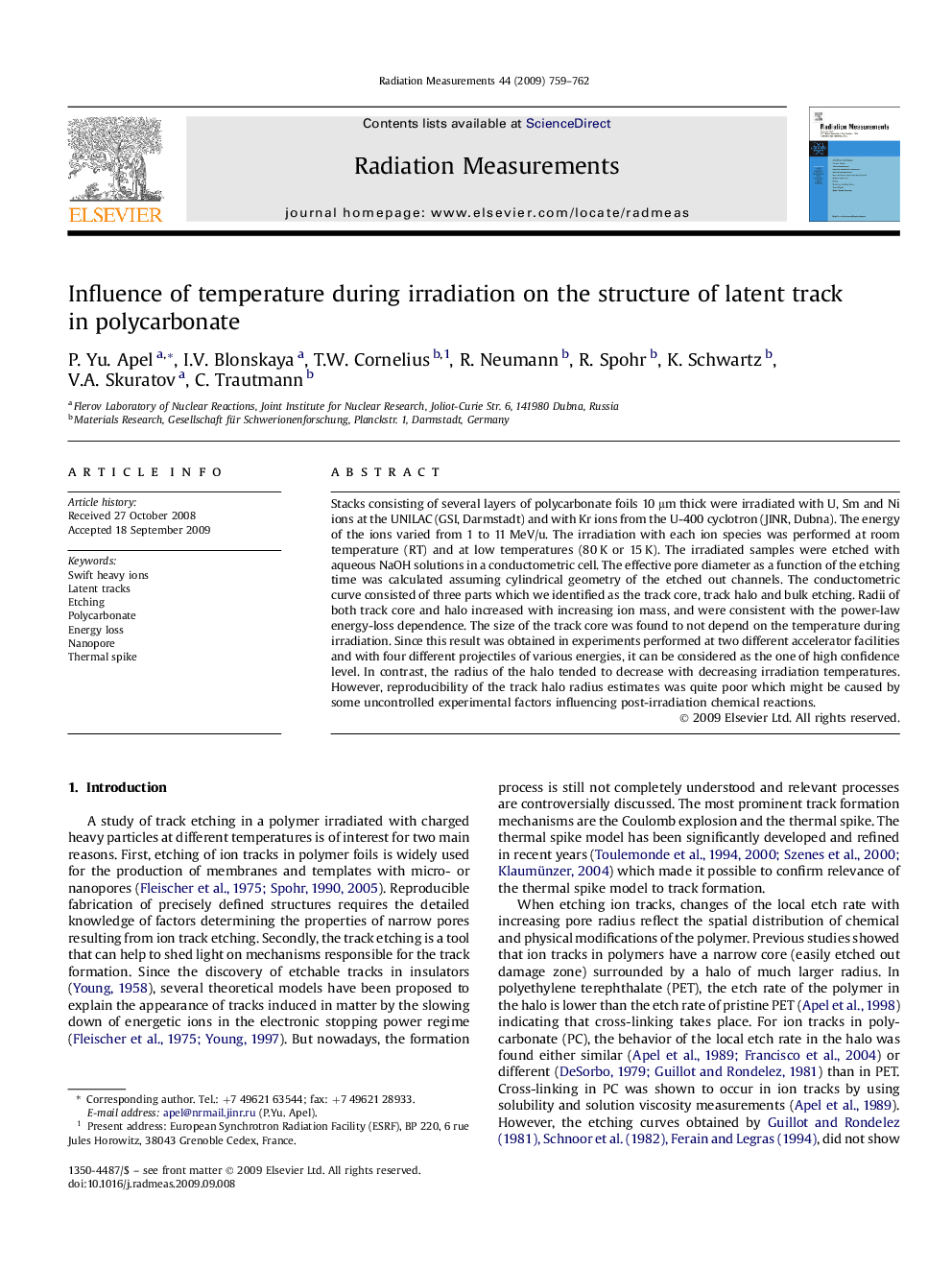| Article ID | Journal | Published Year | Pages | File Type |
|---|---|---|---|---|
| 1881718 | Radiation Measurements | 2009 | 4 Pages |
Stacks consisting of several layers of polycarbonate foils 10 μm thick were irradiated with U, Sm and Ni ions at the UNILAC (GSI, Darmstadt) and with Kr ions from the U-400 cyclotron (JINR, Dubna). The energy of the ions varied from 1 to 11 MeV/u. The irradiation with each ion species was performed at room temperature (RT) and at low temperatures (80 K or 15 K). The irradiated samples were etched with aqueous NaOH solutions in a conductometric cell. The effective pore diameter as a function of the etching time was calculated assuming cylindrical geometry of the etched out channels. The conductometric curve consisted of three parts which we identified as the track core, track halo and bulk etching. Radii of both track core and halo increased with increasing ion mass, and were consistent with the power-law energy-loss dependence. The size of the track core was found to not depend on the temperature during irradiation. Since this result was obtained in experiments performed at two different accelerator facilities and with four different projectiles of various energies, it can be considered as the one of high confidence level. In contrast, the radius of the halo tended to decrease with decreasing irradiation temperatures. However, reproducibility of the track halo radius estimates was quite poor which might be caused by some uncontrolled experimental factors influencing post-irradiation chemical reactions.
